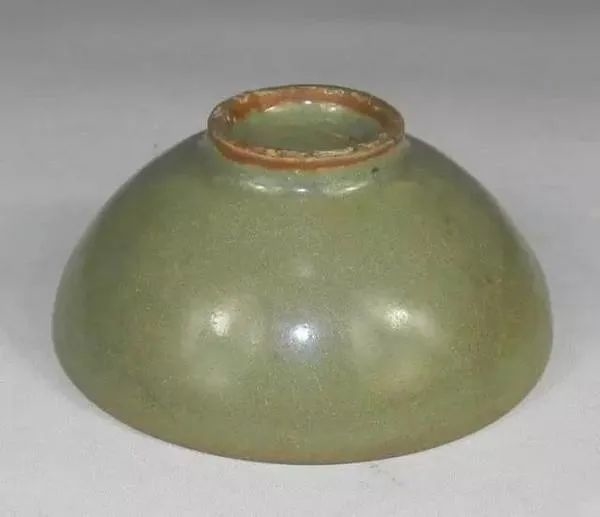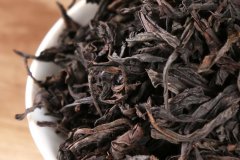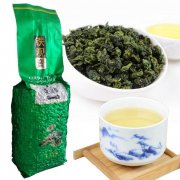How much is the price of tea sets in Ru kiln? what are the characteristics of tea sets in Ru kiln?
The story of the Chinese teapot begins at the same time as the story of Chinese porcelain. In the Song Dynasty, Henan was the cultural and economic center of the Song Dynasty, and it attached great importance to the improvement of art during this period. Therefore, in the Song Dynasty, many pottery kilns were built and the ceramic technology was perfected. The history of Ru kiln porcelain Ru kiln is one of the types of pottery that appeared at that time, and to this day, it is still the most respected one. In the eleventh century, Ru wares were only used by the imperial court. Today, less than 100 pieces of primitive pottery have survived, but modern potters have been able to reproduce the original Ru pottery style very well. One of the most representative features of Ru porcelain is its color, which is often called light duck egg blue. In ancient discoveries, it is also poetically called "the blue sky in the clear sky between clouds after rain". Ru kiln is recognized as one of the five kilns. These are all pottery of the Song Dynasty and are highly respected by people. These five pottery styles are elegant and thin, generally using light colors, without any painting or sketching. These utensils are reserved for the court. Individual items that were not selected for use by emperors were retained as gifts for aristocrats and sometimes even sold to a wider market. Although this situation is rare. Ru pottery is the first official pottery commissioned by the imperial court. The porcelain was sent to the imperial court, gradually making pottery a form of taxation.

It is believed that Ru wares were only manufactured in a very short period of time, from about 1086 to 1106. Later, in the period of ceramic art, the ceramic industry suffered huge losses. Although the history is so short, the reverence for Ru remains to this day. This unique ceramic style is loved by tea lovers and art collectors. In order to create such a delightful color of Chinese porcelain, iron oxide is used in the glaze. This special style is called ceramic celadon. The shiny appearance of the pottery is a sign that will continue to shine for many years. Small cracks appear when pottery is fired at a certain temperature. This is a unique technique that makes the cracks appear so slight. If the crack is too obvious, it is not safe to use it with food or drink because it promotes the growth of mold and bacteria. The kind of fine crack seen in the Ru kiln is completely safe. After continuous use, the color of the tea will begin to seep into the cracks, changing the color and seasoning of the teapot. This is a sign of diligent use of teapots and is highly respected in the tea world. Our Ru kiln porcelain teapot has a side handle. The craftsmanship of the side handle teapot originated from, you guessed it, the Chinese Song Dynasty! The side handle teapot spread to Japan, where it was perfected. In the West, we call this teapot style kyusu, which can easily lead to misunderstanding, because in Japan all teapots are called kyusu. More specifically, yokode kyusu is a Japanese word used to refer to a teapot with side handles. One of the advantages of using porcelain tea sets in the use of Chinese porcelain pots is that you can use them to make tea! Porcelain will not absorb any taste or smell. In addition, it is easy to clean. This is one of the reasons why it is often used in tea tasting and tea competitions. It doesn't absorb or give any flavor that you don't like. However, it is important to carefully wash all porcelain tea sets with hot water after each use (do not use soap or detergent).
Important Notice :
前街咖啡 FrontStreet Coffee has moved to new addredd:
FrontStreet Coffee Address: 315,Donghua East Road,GuangZhou
Tel:020 38364473
- Prev

How much is an authentic Dahongpao per jin? What's the difference between Dahongpao and Wuyi rock tea?
Dahongpao to other Wuyi oolong tea Dahongpao is a famous salt tea variety in the West, but it is sometimes over-hyped. Dahongpao tea tree grows in the cracks in the rocks of Wuyi Mountain and has experienced a long process of growth. Indeed, when tasting Dahongpao, the sweet smell of this hard work is undeniable. Vs.
- Next

Is tieguanyin oolong tea? Tieguanyin tea name origin story and correct brewing method
Tieguanyin oolong tea is now also known as Tieguanyin or Tieguanyin, is one of China's top ten tea. It is common in both Taiwan and the mainland of China, although processed in slightly different ways. Of course, when you walk into teahouses in these countries, you will definitely see Tieguanyin on the menu. Even western cafes often list the Iron Goddess as
Related
- What ratio of water temperature and ground does the smart cup method use to press coffee? The difference between brewed coffee and filtered coffee?
- What is the standard process for the purpose of coffee cup testing? What is the difference between hand-brewed coffee and cup testing?
- How to use hand-brewed coffee paragon small golden balls? How does cold coffee lock in the aroma of coffee?
- Is American coffee black? What is the difference between American coffee and drip coffee?
- Unexpected! Well-known tea beverage brand Lele Tea will withdraw from the Zhengzhou market!
- Starbucks enters the fashion and beauty industry?! Netizen: Give me an ice American eye cream
- Why can American refills for free? The difference between Americano and American drip pot coffee
- Being chased out of the rain in front of Starbucks?! Store: Sheltering from rain under umbrellas poses a safety hazard
- The white moonlight has changed?! Lucky launches "Big Winter Pear American"
- Hand-brewed coffee three-stage method, high-sweet and universal brewing method to share! What does the high sweet water level of hand-brewed coffee mean?

